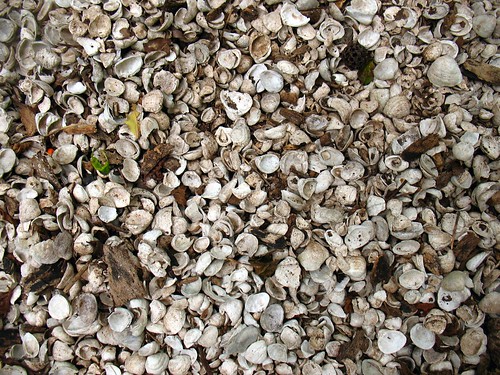 Vilseskogen via Compfight
Vilseskogen via Compfight
There is evidence of people living at Rathdown during the Neolithic or New Stone Age (2,500 BC). In March 1991 part of the cliff at North Beach, Greystones adjacent to Rathdown collapsed into the sea. A newspaper report of the time explains that Grove Residents Association salvaged the find.
‘The items which they recovered over the Easter holidays include a number of fine Neolithic flints, several shards of medieval pottery, some animal bones and teeth, medieval nails and a piece of buckle’ (1)
The haul provided evidence that there was habitation at Rathdown from prehistoric to medieval times.
‘In March 1991, after a period of prolonged rainfall a large section of cliff collapsed just north of the Gap Bridge revealing a midden site.’(2)
The students are very taken with the word ‘midden’ (an old Norse word) and are initially disappointed to hear that a midden is the equivalent of a rubbish dump. But their interest is renewed when they learn of discoveries archaeologists make, about the type of food our ancestors ate by examining these dumping grounds.
Mollusks formed a significant addition to the diet of those living along the coast in prehistoric times. The children speculate from what they see on Greystones sea shore today that the shells found in the midden could have included oysters, cockles, mussels, limpets, whelks, periwinkles, crab claws and fish bones. The chemical composition of the shells slow down the rate of decay within the midden which in turn preserve other materials in the heap.
1. George Jacob ‘Historic find as section of cliff collapses,’ Bray People, April 1991
2. Patrick Neary ‘A Saddle Quern or Grinding Stone from Rathdown Lower, Co.Wicklow https://trowelucd.files.wordpress.com/1992/10/trowel_iii.pdf

